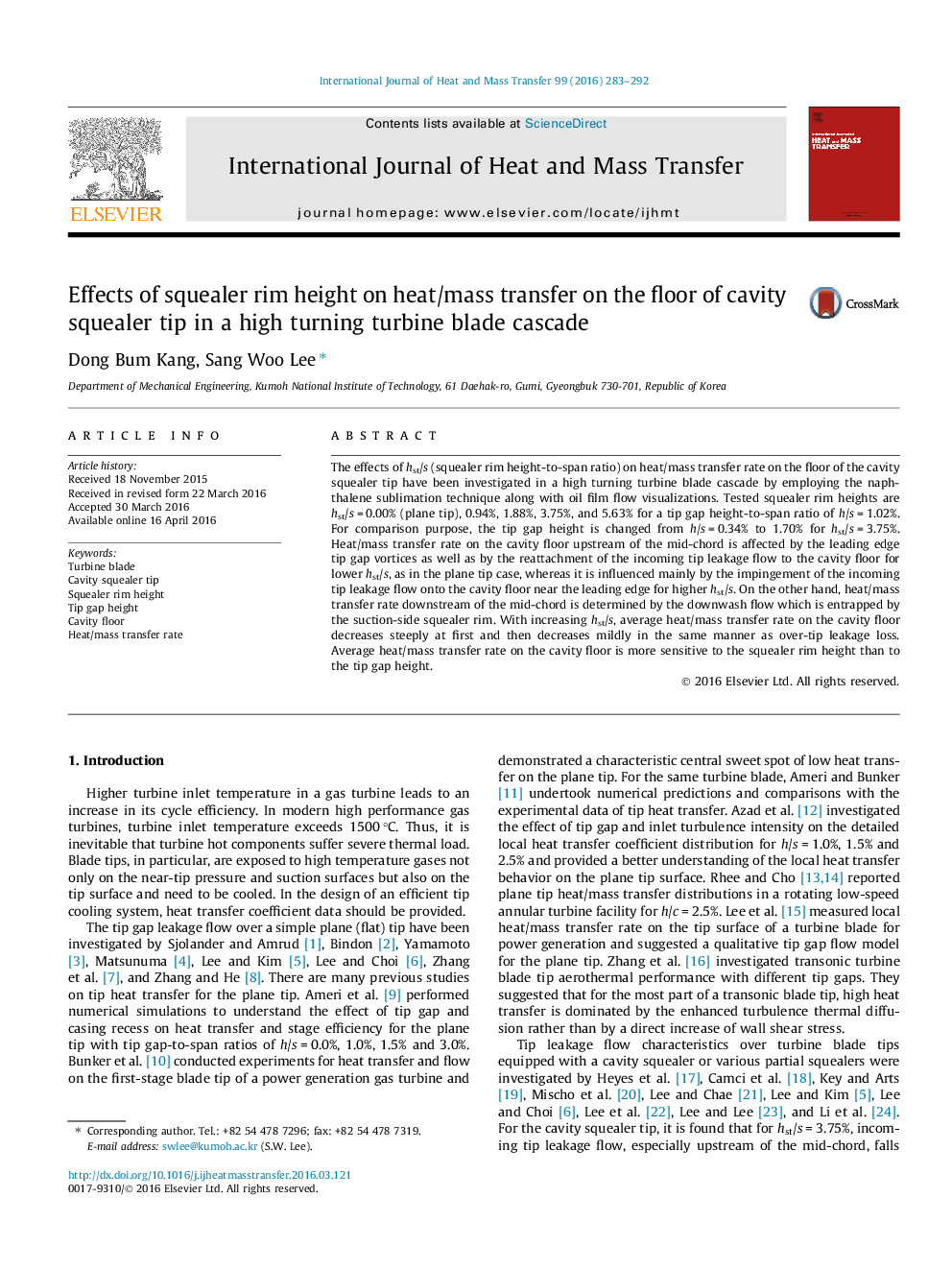| Article ID | Journal | Published Year | Pages | File Type |
|---|---|---|---|---|
| 656453 | International Journal of Heat and Mass Transfer | 2016 | 10 Pages |
Abstract
The effects of hst/s (squealer rim height-to-span ratio) on heat/mass transfer rate on the floor of the cavity squealer tip have been investigated in a high turning turbine blade cascade by employing the naphthalene sublimation technique along with oil film flow visualizations. Tested squealer rim heights are hst/s = 0.00% (plane tip), 0.94%, 1.88%, 3.75%, and 5.63% for a tip gap height-to-span ratio of h/s = 1.02%. For comparison purpose, the tip gap height is changed from h/s = 0.34% to 1.70% for hst/s = 3.75%. Heat/mass transfer rate on the cavity floor upstream of the mid-chord is affected by the leading edge tip gap vortices as well as by the reattachment of the incoming tip leakage flow to the cavity floor for lower hst/s, as in the plane tip case, whereas it is influenced mainly by the impingement of the incoming tip leakage flow onto the cavity floor near the leading edge for higher hst/s. On the other hand, heat/mass transfer rate downstream of the mid-chord is determined by the downwash flow which is entrapped by the suction-side squealer rim. With increasing hst/s, average heat/mass transfer rate on the cavity floor decreases steeply at first and then decreases mildly in the same manner as over-tip leakage loss. Average heat/mass transfer rate on the cavity floor is more sensitive to the squealer rim height than to the tip gap height.
Keywords
Related Topics
Physical Sciences and Engineering
Chemical Engineering
Fluid Flow and Transfer Processes
Authors
Dong Bum Kang, Sang Woo Lee,
